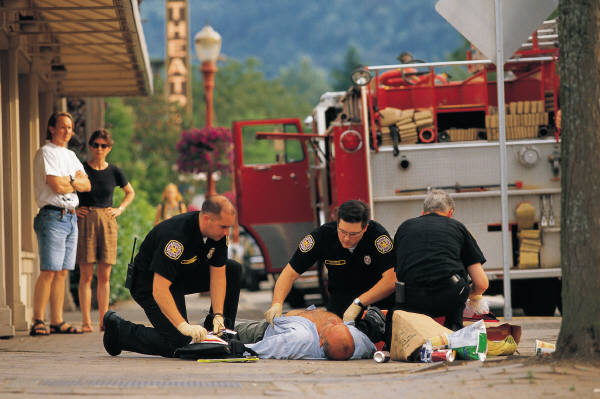
The term Vicarious Trauma has been in the literature since around 1990 to name what many in the helping fields have recognized for years but perhaps didn’t have an adequate term to describe. Compassion fatigue is another closely associated term and we’ve all heard of the dangers of counselor burnout. While there may be differences in the common use and meaning of these terms, they all refer to essentially the same thing, the cumulative emotional and psychological cost of caring for others in times of crisis.
The first time I heard the term vicarious trauma was in a training by Dan Griffin for the curriculum Helping Men Recover (which I highly recommend if you work with men with substance use disorders). He warned of the effects of listening to and empathizing with men who were discussing the effects of traumatic childhood experiences, often for the first time. I heard the term again from Dr. Patricia Resick in a training for Cognitive Processing Therapy. I didn’t think too much about it until I starting doing significant trauma work with a number of clients and noticed how distant and distracted I could be, sometimes for hours after returning home.
The symptoms of Vicarious Trauma are similar to those of PTSD with recurring or intrusive thoughts, avoidance which can include emotional numbing or detachment and arousal which can include difficulty concentrating or trouble sleeping. According to Dr. Sandra Bloom, Vicarious Trauma also impacts a person’s self-esteem, identity and sense of safety along with a number of other factors. The American Counseling Association provides a useful fact sheet detailing a list of signs and symptoms for counselors.
Research conducted by Bober and Regehr (2006) indicates several factors that may be connected with Vicarious Trauma including the age of the counselor and number of hours worked per week. As expected, those working more hours experienced higher levels of distress. Surprisingly, older counselors exhibited lower levels of distress but appeared to have more disruptive beliefs regarding intimacy with others. The type of trauma may also contribute, with those working with child-welfare, domestic violence or sexual assault showing some of the highest rates of distress. Counselors who have experienced personal trauma in the past are at particular risk.
Prevention should be the first line of defense against Vicarious Trauma. Appropriate self-care, quality supervision and appropriate boundaries seem to be effective strategies. I’ve learned not to schedule particularly demanding sessions back to back and to give myself an opportunity to “recover” following sessions I know will focus on trauma. Increasing social activities outside of work may help with both prevention and resolution.
Organization strategies can help reduce the impact of Vicarious Trauma. The book Restoring Sanctuary details what is called “A New Operating System for Trauma-Informed Systems of Care”. Working in teams, accepting stressors as real and legitimate, following a clear organizational value system and providing support at all levels of management and service provision are effective organizational strategies.
What has been your personal experience with Vicarious Trauma? Have you developed specific strategies to prevent or address the problem? Is your organization “trauma-informed”, providing appropriate structures and support? As always I look forward to hearing from other professionals regarding their experience on this subject.



6 thoughts on “Vicarious Trauma”
In developing our program for working with the Pentagon survivors after 9/11, we paid attention to the fallout among MH responders following the OK City bombings. For example, weekly debriefings were built into the work schedule and we tried to create as supportive an atmosphere for staff as possible. Ideally thoughtful protocols for mitigating vicarious trauma are already in place as part of disaster response plans, rather than reinventing the wheel each time.
Thanks for the insight Kimberly. I know our State provided some type of specific training to responders following the recent tornado that struck Moore, Oklahoma. I think most realize the importance of preparing those who respond to specific disasters and attacks. I think what gets missed is the toll taken on those working in the field day after day, year after year with victims of child abuse, domestic violence and sexual assault. In fact, counselors are probably better equipped to handle the fallout than are the judges, probation and court officers who likely also have high rates of vicarious traumatization. I wonder what protocols could be developed to help mitigate the problems for those type professionals?
Daniel, I think perhaps we’re talking about the same thing. No one can really be prepared for what they’re going to witness, hear, etc., and so having trauma protocols in place for during and after the fact is key. Another related demographic that I would add are jurors. After 9/11 I became interested in the vicarious trauma suffered by jurors, who are COMPLETELY unprepared for the testimony and images to which they are exposed. Although I was able to identify a couple of pilot programs, for the most part there was very little to be found in the literature.
Great blog! I haven’t heard too many professionals addressing the issue of vicarious trauma. Moreover, at times people ask me what is that, when I mention the term. I am so glad (as well as surprised) to see a discussion about the issue, which is huge. I made a presentation myself at the place of my employment about vicarious trauma, because I noticed staff becoming more and more stressed and agitated. We are currently working on implementing self-care options at work, such as offering group therapy for staff, mindfulness practices, relaxation exercises, tai chi etc. So far all of these projects are in their embryonic stages, but I am hoping people will eventually utilize them and value them. I noticed the tendencies amongst mental health professionals to stay away from personal self-care. Many mental health professionals are scared of therapy themselves, which is really upsetting. It means they practice something they do not believe in or scared of? Also, I am starting to work on development of “Emotional Wellness” center the primary focus of which will be prevention and treatment of vicarious truama, compassion fatigue, and burnout. My idea is that successful coping with vicarious traumatisation heavily depends on the level of resilience to stress an individual has. Thus, prevention of vicarious traumatization will be focused on strengthening of resilience levels. Here I want to ask all of you if you have any ideas or suggestions for the center to implement. I will greatly appreciate the input. By the way, I am located in Los Angeles, CA.
Thanks so much for the nice comments. For organizational transformation, there is good information, including downloadable assessments and implementation guides available free from https://epowerandassociates.com/Trauma-Informed_Care.php
Excellent summary there! But the biggest defense against suffering from VT is holding onto your committment to working on your own life ! This is a good thing to do even when you are not dealing much with traumatized clients, but its essential if you are. When therapists are in training/studying to work with those who have been traumatized they need to understand the significance of blurring of boundaries when the reactions/ symptoms of the therapist are as intense as the client who has had the experience
Thx for raising this important topic!
Kelly
Comments are closed.